Red Star for Effort: Gunmaker-built Russian EV Earns Top Marx For Retro Done Right
You don’t have to be from a former Eastern Bloc country to feel strange pangs of desire for this Russian one-off. Built by Kalashnikov — yes, that Kalashnikov — the CV-1 concept car features an old body concealing an advanced electric powertrain.
The maker of the AK-47, AK-74, and various other automatic small arms apparently wants to stamp out Tesla’s decadent invasion of the Motherland’s fledgling EV market.
Feeling Average? Study Shows Owning a Car Is Still the Cheapest Way to Get to Your Destination In a Car
Say you’re an urbanite who made the decision to leave the perils and unexpected expenses of car ownership begin and rely only on your phone. A money-saving choice? Not necessarily, according to a study the American Automobile Association.
Drawing information from numerous studies, AAA’s report looks at the cost of owning a vehicle versus the cost of replacing those same trips with a ride-hailing app and infrequent car rental. It’s not even close, but, as the saying goes, your mileage may vary.
Push It: Volvo's Got a Solution for Owners Wanting a Livelier Rear End
If only all automakers had what Volvo’s offering. Starting this month, buyers wishing for more of a sports car experience from their all-wheel drive, non-hybrid Volvo can hack some more attitude into it. On Wednesday, the Swedish automaker announced the availability of new software developed by its Polestar performance division that should do the trick.
Job One for this software? Send more torque to the rear wheels.
Nearly Better Than the Real Thing: Porsche Taps Video Game Tech to Break New Ground in Automotive Design
Porsche has grown rather chummy with the video game community of late. In 2017, the automaker used North America’s largest gaming expo as a platform for the debut of the 911 GT2 RS. You can attribute that to a relatively recent marketing push that resulted in its vehicles appearing in interactive media after a long-standing absence. Porsche, for whatever reason, spent years being exceptionally choosy about which developers can license its vehicles for their games. This usually results in blockbuster titles using “RUF” as a placeholder or simply abandoning Porsche vehicles entirely.
The last five or six years have been different, however. Automakers want to broaden their marketing approach and get away from the big industry trade shows. For Porsche, that means video games, and the relationship is only getting stronger.
This week, Porsche Epic Games and the graphical processing wizards at NVIDIA gathered to showcase what they claim is a major breakthrough in computer design rendering. While we can’t say with any authority that this will forever change automotive design, what they’ve managed to accomplish certainly looks impressive.
Talking Cars: Amazon Lets Loose Alexa Software Kit for Infotainment Systems
You’re likely familiar with Amazon’s cloud-based virtual home assistant Alexa. She’s the little voice that lives inside the Echo, a device which allows consumers to manage their calendar, set alarms, create a shopping list, adjust the thermostat, play music, and a multitude of other functions all via voice command. However, if you’re anything like me, you probably just ask Alexa to tell you bad jokes and read the morning news.
Alexa has found her way into cars lately — most notably those produced by Hyundai, thanks to a partnership with Amazon. But it looks like she’s about to find her way into a whole bunch more. On Thursday, Amazon announced the Alexa Auto Software Development Kit, which provides developers a way to easily integrate all of Alexa’s functions into automotive infotainment systems.
How Safe Is Level 2 Autonomy? As Safe as the Automaker Makes It
No longer content with just crashing vehicles into walls or poles, the Insurance Institute for Highway Safety has turned its attention to the ever-expanding buffet of new technologies found in today’s automobiles. Driver assistance features ease the driver’s workload and make for comfortable highway cruising, but all systems aren’t made equal.
For its test of “Level 2” autonomous features — meaning, specifically, adaptive cruise control (ACC) and active lane-holding — IIHS selected five premium four-doors. The test group consisted of a 2017 BMW 5 Series with Driving Assistant Plus, a 2017 Mercedes-Benz E-Class with Drive Pilot, a 2018 Tesla Model 3 and 2016 Model S equipped with Autopilot, and a 2018 Volvo S90 with Pilot Assist. Given that each model garnered a “superior” IIHS score for automatic emergency braking, they seemed like choice candidates for a comparison test.
The results, as you’d probably expect, were a mixed bag. We’re not at the technological finish line yet; not by a long shot.
Be Thankful the U.S.-Market Nissan Kicks Has Standard Stability Control
A reader sent us a link to a Mexican handling test of Nissan’s new, front-drive Kicks crossover, and one glimpse of the vehicle’s “moose test” will have you on your knees, thanking the deity of your choice for electronic safety nannies.
We all know that high-riding vehicles suffer from an inherent top-heaviness, born of a high center of gravity and compounded by long suspension travel. As SUVs grew in popularity in the ’90s, a slew of alarming videos arose showing popular SUVs flipping or riding on two wheels while swerving sharply to avoid a object, then recovering. The moose test is the ultimate test of a vehicle’s stability, and it’s the test most likely to see a tall vehicle — thanks to rapid weight transfer — roll more than it yaws. Sometimes with disastrous results.
The advent of electronic stability control was a godsend for these types of vehicles, helping overcome much of the roll and yaw, but, while it’s mandated in the U.S., Canada, and Europe, in some markets it’s absent from certain models or trim levels. Take a look at what happens without it.
At What Point Do We Want Our Cars to Be Less Like Our Phones?
That’s one of the unspoken questions contained in Automotive News‘ report on automotive supplier Continental’s new biometric authentication technology. Passwords are the scourge of the modern age, it’s true, and having a secure way of locking and unlocking a sensitive…anything…is preferable to trying to remember that damn combination of letters and numbers.
Computer files. Your phone. The entrance to sterile, high-security office buildings. These are all good candidates for facial recognition technology, fingerprint and retina scans, or voice recognition. But your car? It’s true that using this technology — in addition to conventional keys and fobs — would add an extra layer of defence, improving your vehicle’s chances of remaining unmolested. But at what cost?
Rental Companies Should Be Worried About What's Gaining in Their Rear-view
For a product or service to dominate a body of customers, another must fade to the background. Think of direct and alternating current, or perhaps digital cameras and 35mm film.
It gets a little fuzzier when the topic of personal transportation arises. Some modes of transport are so much more more useful than what they replaced (cars and horses, jetliners and ocean liners) that the preceding mode is relegated to a niche category. In others comparisons, the usefulness of a certain mode remains strong only in certain areas. Think trains.
But in a car-based world, consumers now have more options than ever in how they get around when their personal vehicle is left sitting at home. A recent survey shows just how pleasant regular car renters find app-based ride-hailing services, and traditional rental companies would be foolish to not take note.
Not Giving Up: Toyota Wants Mass-produced Mirai FCVs, Longer Range
Despite it being the most abundant element in the world — but one of the hardest fuels to source — automakers aren’t giving up on hydrogen. That group includes Toyota, which launched the world’s best-selling hydrogen fuel cell vehicle, the Mirai, in 2015.
Early this year, the 3,000th U.S. Mirai found its way to the driveway of a California customer. Cali remains the only American jurisdiction where FCV vehicles, and refueling infrastructure, are offered (though a hydrogen shortage last week saw SoCal stations dry up).
In the hopes of boosting the fuel’s prevalence and stimulating demand, Toyota plans to enter mass production with its second-generation Mirai, expected early in the coming decade.
Ford Commits $4 Billion to the Future, Creates New AV Subsidiary
Ford Motor Company announced Tuesday that it has formed formed a subsidiary — Ford Autonomous Vehicles LLC — devoted entirely to autonomous vehicle development. That’s probably the catchiest name we’ve heard since Bank of America Corp or Waste Management Inc. However, you don’t need a clever moniker when you’re dumping $4 billion into a project, which Ford intends to do through 2023.
With all the current drama and distrust surrounding self-driving cars, we thought there was a chance automakers would cool off on pushing for it so aggressively. But while some OEMs curbed their futuristic rhetoric ever so slightly, practically everyone else kept the pedal to the metal — an analogy that will lose all meaning once computers drive us everywhere.
Let’s see what The Future™ looks like in and around Dearborn.
Maven's 'Peer Cars': Your Mobility Future Is Someone Else's Ride
A pilot project we discussed months ago is now up and running in Detroit, Ann Arbor, and Chicago. Launched by General Motors’ Maven ride-sharing arm, the new peer-to-peer service goes beyond the existing fleet of GM-owned vehicles (which Maven users can rent for varying periods) and into the realm of the privately-owned car.
Yes, there’s owners who are now letting their car work for them.
NHTSA Deputy Administrator: There's No Need to Regulate Autonomous Cars
Heidi King, deputy administrator of the National Highway Traffic Safety Administration, claims it’s too soon to begin imposing rules on self-driving vehicles. Thus far, the NHTSA as taken a supremely lax posture on handling autonomous vehicles in the hopes that a softer touch will assist in their swift development.
However, a cluster of fatal incidents involving advanced driving technology created fresh paranoia within the government.
While the argument could be made that those accidents demand a response from federal regulators, it’s also clear the government doesn’t have a firm grasp on the technology. Likewise, there’s little consensus among automakers that have only recently begun discussing how these vehicles should be standardized, and loads of conflicting opinions exist on the matter of safety. In the short term, advanced electronic aids allow motorists to become worse at driving. But, if fully autonomous vehicles function as intended, their long-term safety benefits could be immense.
The NHTSA claims the resulting confusion means it’s too early in the process to make any kind of definitive rulings.
Should Police Have the Ability to Track and Disable Self-driving Vehicles?
Autonomous vehicles have created an endless series of unanswerable questions. As the technology continues to advance, decisions on how best to implement it have not. We’ve yet to discern who is liable in the event of an accident, how insurance rules would change, if they can coexist effectively with traditional automobiles, how they will impact vehicle ownership in the long term, and the infrastructure necessary to ensure they’ll function as intended.
There’s also a myriad of security concerns involving everything from the very real prospect of vehicle hacking to automakers selling the personal information of drivers. Both of those topics are about to come to a head as automakers continue shifting toward connected vehicles.
In March, the U.S. Transportation Department met with auto industry leaders, consumer advocacy groups, labor unions, and others in an attempt to navigate the minefield that is autonomous integration. The department previously hosted similar roundtable discussions in December after releasing the new federal guidance for automated driving systems, called “ A Vision for Safety 2.0.” That guidance freed up automakers and tech firms to test self-driving vehicles with fewer regulatory hurdles to cope with.
However, the December report seemed to focus mainly on how little everyone outside the industry understands the new technology.
A Safer Route Home, but Is the Customer Always Right?
Depending on who you ask, Uber is either a godsend or a harbinger of civilization’s downfall. When the ride-hailing app went live in my corner of the world, disgruntled taxi drivers threatened violence against Uber drivers found waiting for a fare. I still get in the front seat out of habit. Cab drivers in other cities weren’t happy about their monopoly being threatened, either.
Elsewhere, Uber is a common way for urbanites to get around and, despite a number of past controversies involving the company and its drivers, people seem just fine with its presence. Naturally, for some users, safety remains an issue. But what if you could choose not only the route taken, but also the make and model of the vehicle showing up at your door? If the thought of riding in an old beater turns you off, why not wait until the closest vehicle with a five-star safety rating shows up? A new patent filing shows Uber wants to make that happen.
Apple Rebuilding Maps App, Hopes to Outperform Google
Apple Maps has been a lackluster tool for navigation since its launch. Of course, you probably don’t know this because you’re statistically more likely to back out of the driveway using Google Maps or Waze. That’s because the latter programs seem to work as intended. The same cannot be said of the former.
While Apple can get you down a major highway without incident, it frequently falls apart when you start asking it to make sense of a complex, overlapping network of roads or sparsely traveled rural area. Meanwhile, Google has already mapped the same areas twice and taken photos of every blade of grass within 100 square miles.
Upon launch, Apple Maps was plagued with issues. Areas were left blank, locations were misnamed, landmarks were misplaced. Had it come out a decade earlier, it’d have been a technological marvel. But with competent competition readily available, the iOS-based navigation system was (and remains) unacceptable. So Apple is giving it a complete overhaul.
BMW Rep: Government May Never Allow for Autonomous Cars, Computerized Life and Death Decisions
BMW’s past promises include a pledge to help keep drivers driving in the brave new world of autonomous vehicles. However, it hasn’t entirely sworn off self-driving technology. The company finds itself in a tricky spot, as it’s seen as both a luxury automaker and a performance brand. But it can’t claim to be “The Ultimate Driving Machine” if it doesn’t allow customers to drive.
Automakers and tech firms pushed relentlessly for autonomous driving, making claims that a self-driving nirvana was just around the corner. But current technology proved less than perfect in practice and modern autonomous vehicles require constant human involvement to operate safely, just like any normal car. Despite making strides, the industry seems torn on how to appease everyone.
The government is even more in the dark. While lawmakers initially agreed with industry rhetoric (that autonomy will save lives and usher in a new era of mobility), recent events sparked skepticism. There aren’t many new regulations appearing in the United States, but there also isn’t any clear legislation to help decide who’s held liable when the cars malfunction. A lot of what if questions remain unanswered.
BMW thinks this will be the main reason why autonomous cars fail.
Talk to the Chair: Ford Patents Voice-activated Seats
Apparently, the increasingly complex array of buttons on the side of a modern driver’s seat has become too much for humans to process. There’s just too many ways to adjust our seating position (though not in this writer’s car).
What if, instead of pressing buttons and switches, we could bark orders or use a touchpad? That’s the future Ford envisions.
Automakers Working Feverishly to Make Car Keys Disappear
Keys have evolved quite a bit over the last century. Most cars don’t require that you use a traditional key anymore, and proximity sensors take away the need to even lock and unlock a vehicle’s doors. While some of us appreciate the satisfying sensation of pressing a button or turning a key, it’s grown unnecessary. But some automakers want to take things a step further and abandon keys altogether.
We’ve heard BMW mention this before. Back in 2017, the brand’s head of sales said the automaker was actively reassessing the practical value of car keys now that keyless entry is the norm. “Honestly, how many people really need [keys],” Robertson said. “They never take it out of their pocket, so why do I need to carry it around?”
Now, the Car Connectivity Consortium (CCC), which includes BMW, General Motors, Hyundai, Volkswagen, Audi, Lincoln, Apple, LG, Samsung, Panasonic, and more, has published the Digital Key Release 1.0 specification. The aim is to establish a standardized solution for the industry that enables drivers to download a digital key onto their smart devices and use it on every vehicle they own.
Uber Driver May Have Been Watching TV Before Fatal Collision: Police
The mash-up of fledgling technology that requires human vigilance to ensure safety and our natural inclination to become distracted by mobile devices appears to be the cause of the fatal Tempe, Arizona Uber crash in March.
According to a lengthy police report obtained by Reuters, the driver of the autonomous Volvo XC90 operated by Uber Technologies may have been watching the TV show The Voice in the moments leading up to the collision. The impact killed 49-year-old Elaine Herzberg, who was crossing the darkened street with her bicycle.
Audi Now Has Permission to Test Flying 'Cars' in Germany
The flying car repeatedly proves itself as the dumbest idea since the industrial revolution kicked off. With the exception of takeoffs and landings, aircraft don’t need roads and automobiles aren’t really engineered for the sky. They’re typically far too heavy and have aerodynamics intended to keep them on the ground. A good car does not make for a good plane, and vice versa.
While a few flying cars do exist, they’re really just airplanes modified to allow for car-like earthbound driving. Functional, but not particularly effective on the road. That’s why the industry is shifting toward designs more akin to helicopters. The newest trend is to supersize drones and affix them to the top of lightweight self-driving automobiles.
That appears to be the direction Audi is headed in its partnership with Airbus. But surely this is engineering at is most masturbatory. If you’ll excuse the pun, these kinds of projects never really get off the ground. We see concept designs, hear some lofty promises, and then nothing ever comes of it. Moller International has been working on its SkyCar for decades and now the company is trading at a penny per share with nothing to show for itself but a concept capable of covering a couple feet from the pavement.
What does Audi have that’s so different?
More Intrigue at Tesla As Automaker Sues Former Employee for Data Theft, Media Claims
Never far from (or out of) the headlines, Tesla has filed a lawsuit against a former employee, alleging the individual stole confidential data hacked from the automaker’s manufacturing operating system and sent it to third parties. He’s also alleged to have made false claims to the media.
The contents of the lawsuit, filed in federal court in Nevada against former process technician Martin Tripp, can be read here. In it, Tripp is alleged to have written computer code designed to funnel data from the company, installing it on several computers to keep the information flowing.
Report Claims Self-driving Cars Will Make So Much Money, No One Will Care About Employment Losses
There’s been plenty of discussion about how autonomous vehicles will effectively annihilate the trucking and taxi industries. We’ve certainly discussed it — in addition to concerns that self-driving vehicles may not reduce pollution and traffic congestion as promised.
Fear not, claims a recent report sponsored by Securing America’s Future Energy. The problem of self-driving cars displacing huge numbers workers is apparently overblown when compared to the economic impact as a whole. According to the study — “America’s Workforce and the Self-Driving Future” — the loss in employment opportunities should be offset by the potential advantages in safety, cheaper transportation, mobility, air quality, and individual productivity.
The report says that by 2050, AVs will contribute between $3 and $6 trillion in cumulative consumer and societal benefits to the U.S. economy. While it’s not clear how much of that will go into the pockets of people who’ve lost their jobs, it sure sounds great in theory.
But is this really the future of autonomous transportation? And who are these wizards of analysis who tell us the future looks so damn bright?
Grabbing the Future: Toyota Drops a Billion Into Ride-hailing Company
Not wanting to be left out of the alternative revenue streams party, Toyota Motor Corporation has invested $1 billion into a Singapore-based ride-hailing and ride sharing company you’ve probably never heard of.
Grab Holdings Inc., known to consumers simply as Grab, offers numerous car-based transportation options and services in Southeast Asia. Don’t have a car? Borrow one from Grab. Hail one operated by Grab.
In the future, it seems likely that car will be a Toyota.
For All Its Talk of Mobility, Ford Says It's Fine With FCA and GM Leading the Robocar Pack
If recent statements from Ford Motor Company were any indication, you’d think we were living in some futuristic society where our grandparents drove Nucleons and the need for a personal vehicle was almost nil. Yes, too much “mobility” talk gets under the skin.
That said, it’s Ford’s domestic rivals who are actually building and fielding production vehicles that drive themselves — and setting up businesses and partnerships that could make the automakers a bundle on the side. By next year, both General Motors and Fiat Chrysler could have self-driving vehicles roaming America, earning their companies money.
Be our guest, Ford claims. There’s bigger things to worry about.
Musk Is Right About the Media, Rocket-powered Roadsters and Tesla Version 9 Edition
Tesla Motors CEO Elon Musk is correct in asserting just how poorly the media covers his company. We know that because, after he tweeted that Version 9 of the company’s software would allow the firm to begin enabling “fully self-driving features,” numerous outlets started claiming complete driving autonomy was just around the corner. We hate to be the bearer of bad news, but that isn’t what’s happening.
To be fair, much of the confusion came via headlines suggesting Musk had explicitly promised a fully self-driving vehicle. While that’s not even close to what he did, we understand that it’s a heading too tempting for many to refuse. We’re betting Elon grasps this concept as well, which is why he chose his wording so carefully. Frankly, the CEO probably comprehends the media far better than the media understands his company, and he regularly uses this to his advantage.
While several outlets clarified that Tesla was actually implementing a software update (with unclear ramifications in the body of their text), plenty glossed over that aspect of the story. Instead, they decided to tack on Musk’s earlier promise that the Tesla Roadster would be offered with a SpaceX package — 10 small rocket thrusters to improve the vehicle’s dynamics.
Maybe Tesla Vehicles Could Use a Seat-shaker Feature…
Hell, maybe they could use a driver monitoring camera, too. In other words, Cadillac’s Super Cruise system. How else would one react to seeing this video of a Tesla employee apparently dozing behind the wheel of a Model S while flying down a California highway?
The video, uploaded by YouTube user Mike Cagulada and posted on Twitter by Amir Efrati of The Information, was apparently shot near Tesla’s Fremont assembly plant on June 4th. By the looks of it, this driver isn’t bobbing for apples — he or she is asleep.
Ford to Launch Data Monitoring/Analytics Program on Commercial Fleets
We’ve prattled on before about how General Motors sees data mining as its next big business opportunity. While much of our take focused on the risk that customers might lose their privacy and become both commodity and consumer, it would be stupid to suggest it isn’t also a highly lucrative business strategy.
Social media outlets sell your personal information on a daily basis and other industries see potential in that. GM isn’t the only automaker jumping on the bandwagon, it’s simply the one with the most transparent blueprint.
Ford recently opened up about its own data strategy. The company previously announced large investments into data centers, stating its intent to equip 90 percent of its global fleet with modem connectivity by 2020. Ford Smart Mobility was also reorganized earlier this year, an effort that included the acquisition of two tech firms focused on transit data. The automaker split the group to focus on key areas: transportation data, marketing, tech development, and the management of previously established programs like FordPass and Chariot.
Ford obviously had a plan in the works for a while, but we didn’t know exactly what Ford’s execution would look like until now.
Your Future Honda EV Might Have a General Motors Battery
Not if you’re planning on leasing a Clarity Electric, of course, though future iterations of Honda’s greenest model could use what General Motors is pushing. Which is: a far more energy dense battery.
On Thursday, the two automakers announced a partnership to develop smaller, longer-ranged batteries for use in electric vehicles, primarily those sold in North America. Once the two achieve a breakthrough, GM will become Honda’s supplier.
NTSB Report Says Tesla Was Accelerating at Time of Fatal Mountain View Crash
The March 23rd death of a Tesla Model X driver in Mountain View, California prompted the National Transportation Safety Board to probe why the vehicle, driving in Autopilot mode, left its lane and collided with a concrete lane barrier on a clear day. The impact killed 38-year-old Walter Huang, an Apple engineer.
In the wake of the crash, the safety agency booted Tesla from the investigation after the automaker released details relating to the vehicle’s (and victim’s) actions in the moments leading to the crash. We now have the NTSB’s preliminary report on what happened before, during, and after the collision.
GM to Europe: Don't Be so Down on Diesel
Even though General Motors gleefully offloaded its European division to the French, it still maintains a slight presence in the region. A powertrain engineering center in Turin, Italy remains in the GM fold, which gave the automaker an opportunity to dish on a much-maligned propulsion source: diesel fuel.
Hey, this stuff’s still useful, the automaker’s CEO of global diesel development, Pierpaolo Antonioli, told an uncertain European crowd this week.
Super Cruise Coming to Rest of Cadillac in 2020, Conspiracy Theories Coming by 2023
General Motors intends to start offering its hands-free driving system, Super Cruise, across the entire Cadillac lineup by 2020. The technology, already available on the CT6, allows motorists to take a semi-passive role on the highway. Once GM’s luxury brand is sorted, the system will become available on other makes.
If you like the idea of a car that can take you out of the commute a bit and don’t mind the idea of a small camera permanently pointed directly at your face, then this is probably very exciting news.
While Super Cruise is frequently compared to Tesla’s Autopilot, the two operate differently. General Motors’ system does indeed allow for a similar hands-free experience, but the onboard camera tracks the driver’s eyes to ensure they remain relatively attentive to the road ahead. Meanwhile, Autopilot allows drivers to ignore almost everything so long as they’re willing to regain control of the vehicle when asked. The difference between the two is that the onus of safety remains slightly more with the driver with Super Cruise.
Japan's SoftBank Dumps Cash Into America's Autonomous Vehicles, Sets GM Deadline for 2019
Several months after procuring a large ownership stake in Uber, SoftBank has placed $2.5 billion into General Motors’ self-driving program. The automaker intends to begin deploying autonomous vehicles next year and CEO Mary Barra says her company will invest $1.1 billion of its own funds into the effort to ensure the timeline is adhered to.
Thanks to the hefty investment from SoftBank’s Vision Fund, the Japanese holding company now owns roughly 20 percent of General Motors’ tech subsidiary, known as Cruise Automation. While tech firms and automakers have been driving hard to surpass each other in terms of autonomous development for years, GM currently appears to have the most riding on the hardware.
Unlikely Automotive Component Enters the Digital Age, Promises Convenience, Annoyance, Privacy Concerns
Why should life be hard? We have science. That was basically my dad’s rationale for replacing his gas-powered lawnmower for one of the lithium-ion variety — a product I didn’t know existed until it showed up at his house one day.
Yes, technology can be great. In our cars, it keeps insurance adjusters at bay and our cars out of the rhubarb. There’s no doubt that Cadillac deserves kudos for introducing the electric starter back in 1912 — no one likes breaking their arm or getting run over in the driveway while trying to fire up the ol’ heap. Still, as our society becomes more connected (and, strangely, more politically polarized), basic tasks seem to be handed over to digital minds at an ever greater clip. Adjusting the dash vents in a Tesla Model 3 involves navigating a menu on a touchscreen interface.
Now, a thin slab of metal affixed to one of more ends of our cars (a component historically hammered out by sweaty convicts) has entered the digital age. The license plate.
It was a long time coming. Naturally, it costs a stupid amount of money to have one.
Consumer Reports About-face Brings 'Recommended' Label to Tesla's Model 3
The Consumer Reports review that criticized the Tesla Model 3’s stopping distance and all-consuming touchscreen seems to have sparked CEO Elon Musk’s recent spat with the media, but a change of heart at CR might cause Musk to think twice about his proposed rating site for journalists.
After the automaker improved the model’s 60-0 mph stopping distance by nearly 20 feet (a feat accomplished via an over-the-air software update), the publication bestowed the car with a “recommended” rating, despite lingering concerns over certain features. Maybe the torches-and-pitchforks crowd can clear off CR‘s lawn now.
The Blame Game: Driver Fingers Autosteer as Cop Car Collision Cause
This won’t help our Pravda rating.
Police in Laguna Beach, California told the “media” that the driver of a Tesla Model S that collided with a parked Ford Police Interceptor Utility on Tuesday was operating in Autopilot mode. At least, that’s the driver’s claim.
Images released by Laguna Beach PD reveal a somewhat glancing rear impact, as it seems the police cruiser only slightly intruded into the driving lane. The cruiser, then unoccupied, was totalled, while the insurance company — if past collisions are any indicator — will probably declare the Tesla a write-off.
Right now, there’s no confirmation that autosteer and traffic-aware cruise control was enabled on the Tesla.
NTSB Releases Preliminary Report on Fatal Uber Crash; Vehicle 'Saw' Victim 6 Seconds Before Impact
The Volvo XC90 that hit Elaine Herzberg on a darkened Tempe, Arizona street was travelling 43 mph at the time of impact. Guided by a combination of cameras, radar sensors, and lidar designed to cut through the gloom, the two-ton SUV “saw” the victim 6 seconds before impact, according to a preliminary report released by the National Transportation Safety Board.
The Volvo, operated by Uber Technologies, applied the brakes 1.3 seconds after impact. However, it wasn’t autonomous software that ended up sending pressure the front and rear pistons. A human did that.
Uber Pulls the Plug on Autonomous Vehicle Testing in Arizona
The area around Phoenix, Arizona can say goodbye to the fleet of self-driving Volvo SUVs operated by Uber Technologies. The ride-sharing company, which suspended all on-road autonomous vehicle testing after a fatal pedestrian collision in March, has announced it’s shutting down its operations in that state.
Up to 300 employees stand to lose their jobs.
While the departure hints at a newfound culture of caution and discipline at Uber, it isn’t terminating its self-driving program altogether, nor will its conventional services leave Arizona. The company’s self-driving vehicles could be on the road again this summer.
Camera-guided Ford Fusion Sails Through Red Light; Supplier Blames … Other Cameras
Mobileye, the Israeli company that supplies camera-based driver assist technology to a host of automakers, just received a black eye.
While one of its Ford Fusion Hybrid testbeds cruised through the streets of Jerusalem to show off its autonomous driving abilities, the sedan, equipped with 12 cameras (three of them forward facing), four advanced EyeQ4 chips, and a television audience, drove merrily through a red light.
It’s technically not the car’s fault, Mobileye said. It’s the TV crew’s.
Them's the Brakes: Musk Promises 'Further Refinement' of Model 3's Binders
If you weren’t on Twitter yesterday, well, you picked a good day to stay away. However, if public battles between an automaker and the media is your thing, coupled with exasperating (and disturbing) displays of tribalism from the manufacturer’s fan base, Monday was a gold mine.
The social media brouhaha was a result of Consumer Reports‘ less-than-glowing review of the Tesla Model 3, which was found to have the worst braking performance of any contemporary car in the publication’s testing catalog. As Tesla disciples circled the wagon (one created a list of “bad journalists”), Tesla CEO Elon Musk responded to CR‘s findings.
In Wake of Crashes, Public Confidence in Self-driving Cars Pulls a U-Turn
Following a Wild West-like expansion in autonomous vehicle testing, coupled with years of rosy predictions from automakers and Silicon Valley types, the public seemed ready to embrace self-driving cars with open arms.
Opinion polls showed significant distrust in the technology, but least among young adults, the idea of self-driving cars remained a popular one. That’s changed, apparently.
Here's What Utah Police Discovered About the Final Trip of That Tesla Model S
A few days after last Friday’s collision between an Autopilot-enabled Tesla Model S and a stopped fire department truck, police in South Jordan, Utah blew away the clouds of speculation by stating the Tesla driver was looking at her phone immediately prior to the collision. Witnesses claim the car, piloted by an on-board suite of semi-autonomous driving aids, didn’t brake as it approached the traffic signal (and the stopped truck).
Now we know the entirety of what occurred in the car in the minutes preceding the 60 mph impact.
Audi Announces A8 Pricing, but Model Lacks Tech Promised for U.S.
Audi recently announced pricing for the V6-equipped A8, arriving in dealerships this fall for the rock-bottom price of $83,800. Alright, so that’s not exactly chump change, but Audi promised tech that would embarrass practically everything else on the road — including the Mercedes-Benz S-Class.
In some markets, it seems as if the brand will deliver on those promises. The sedan is practically dripping with technology, including the impressive-sounding Traffic Jam Pilot. The system offers a claimed hands-free experience at speeds below 37 mph, as the vehicle can crawl in heavy traffic without the need of a driver. You’ll still need to turn it off and take over in urban environments but, so long as it’s a relatively straight shot, the car will do all the work.
Unfortunately, Audi seemed to have axed its availability for the United States.
Kia Ready to Launch Its Mildest Hybrid Yet
It isn’t a model, it’s simply a powertrain. After the recent announcement of the Niro Electric and earlier hybrid and plug-in hybrid applications, Kia’s ready to dial it way back for the masses.
The automaker has announced a 48-volt mild hybrid system that shouldn’t confuse unsavvy buyers, providing it never uses the word “hybrid” in their company. The system’s name? EcoDynamics +.
Tesla Model S Crashes While on Autopilot, Leads to Musk Vs. the Media
When is an accident not just an accident? When it involves a Tesla, according to Elon Musk. The electric automaker’s CEO took to Twitter to lambaste the media Monday night for reporting on the high-speed collision between a Tesla Model S and a stopped fire truck in Utah last Friday.
It’s true, a collision resulting in minor injuries usually only warrants a brief mention in local media, if that. However, context is key. When it’s revealed that Tesla’s semi-autonomous Autopilot system was activated at the time of the collision, sorry, that’s news.
Shocking? Many Buyers Aren't Quite Sure What a Hybrid Car Is
The first mass-market hybrid in the Western World, the Honda Insight, debuted while we were still worrying whether Y2K would lead us back into the Stone Age. Some days, I wonder whether we’d be better off if it had.
Regardless of my personal feelings about humanity and societal progression, we’ve had nearly two decades to familiarize ourselves with the gas-electric powertrain, but apparently not everyone got the message. A recent survey of 1,000 drivers shows there’s still plenty of confusion over what a hybrid car is actually capable of.
Report: Self-driving Uber Vehicle Involved in Fatal Collision Saw, Ignored Pedestrian
The fatal collision between an autonomous Volvo XC90 operated by Uber Technologies and 49-year-old Elaine Herzberg in March could have been prevented, had the vehicle’s software not dismissed what its sensors saw.
That’s what two sources briefed on the issue told The Information, but Uber isn’t divulging what led to the Tempe, Arizona collision. What it will admit to, however, is the hiring of a former National Transportation Safety Board chair to examine the safety of its self-driving vehicle program.
Thwarted on the On-ramp: Waymo Driverless Car Doesn't Feel the Urge to Merge
Tempe, Arizona, that sunny hotbed of autonomous vehicle testing, made headlines earlier this year after a driverless Volvo XC90 operated by Uber Technologies struck and killed a woman crossing a darkened street. The “driverless” vehicle, which had a (distracted) Uber employee behind the wheel, apparently didn’t see the victim. Uber suspended testing after the incident.
Now, Tempe’s making headlines again. A Waymo-operated Chrysler Pacifica found itself the victim of a collision on Friday afternoon, but it’s the behaviour of another Waymo minivan — caught on video by another motorist — that’s generating the most interest today.
Pentagon Joins Tech Startups in Race for Autonomous Vehicles
It’s been a rough road for autonomous vehicles. Despite development progressing significantly over the last decade, tech companies and automakers have been confronted with a myriad of issues. There have been intellectual property lawsuits, public safety concerns, and a recent backlash from government officials who are starting to wonder if the entire concept has been oversold.
However, the government still wants self-driving cars, especially the Pentagon. The Defense Advanced Research Projects Agency (DARPA) has been researching autonomous cars since the technology was in its infancy and, with so many firms trying to bring the technology to market, the military sees no reason it shouldn’t be the first.
It’s not like it doesn’t have the money.
GM Revamps OnStar: Take a Long Look In the Mirror
When General Motors first deployed OnStar, it was a little more than an emergency services hotline. Drivers in need could tap a blue button on their rearview mirror and immediately get in contact with an operator. The system could also do this automatically in the event of a crash. OnStar later introduced anti-theft measures, turn-by-turn navigation, and remote access as part of a subscription plan.
However, with General Motors seeing dollar signs wherever connectivity is involved, the automaker wants to retool the system. OnStar will continue offering existing services, but GM is changing the subscription model and placing a new emphasis on data acquisition. The good news is that the tiered payment model will offer more features starting in May. Unfortunately, some those amenities used to be free and those fed up with companies selling your data or paranoid about Orwellian Big Brother scenarios might be less enthusiastic about the long-term corporate vision.
Bosch Claims It Can Save Diesel With New Exhaust Tech
Bosch says its engineers have developed a new diesel exhaust system that could lower emissions to a point where governments no longer have to worry about banning the fuel.
It’s not a defeat device.
If you’ll recall, Robert Bosch GmbH found itself caught up in Volkswagen Groups emissions scandal. Owners of affected cars accused the company of helping develop the illegal software that allowed the vehicles to fool environmental regulators. Bosch launched an internal probe as a sign of good faith and has not officially been charged with any wrongdoing by federal authorities.
That’s good news for the company, because any attempt to promote diesel-friendly equipment would have been overshadowed by a preexisting scandal — especially something as miraculous-sounding as this.
Not Interested: Ford Passes on General Motors' Nine-speed Transmission
Way back in 2013, General Motors and the Ford Motor Co. signed an agreement to collaborate on transmissions. The deal stipulated that GM would get access to Ford’s 10-speed automatic transmission, intended for rear-drive applications, if the Blue Oval could have the Hydra-Matic 9T50 nine-speed under development by The General for front-drive models — and everyone would save some money.
However, things didn’t play out as intended. Ford is now saying the nine-speed auto doesn’t provide enough of a fuel economy improvement to justify the added cost and weight of an extra gear. It won’t be using it, at least not in its current form. Instead, Ford engineers have decided to use a trio of transmissions with fewer gears for front-wheel-drive units.
GM Wants Customers to Pay for Gas Without Leaving the Vehicle
General Motors is updating its on-board digital marketplace to allow customers to purchase fuel without ever having to leave the vehicle. You’ll still have to leave the confines of the vehicle to actually pump the gas, unless you live in New Jersey, but the exchange of money is handled entirely by the world’s first “in-dash fuel payment system.”
What a time to be alive.
The new service is available via the Shell widget, which is already featured on GM’s Marketplace app (providing directions to the nearest Shell station). The corporate collaboration allows respective patrons to select a nearby Shell station, use the map to navigate there, park, select a pump, fill up, and drive away. Payment is automatically charged through Shell’s Fuel Rewards program.
Toyota Confirms 'Talking' Cars for 2021
Toyota wants to be a leader in the connected vehicle field and is encouraging all automakers to utilize dedicated short-range communications (DSRC) on all of vehicles sold in the United States — especially after it has already decided to do so with its own fleet. The brand has said it will be building talking cars by 2021. But they won’t talk in the same sense as a 1987 Chrysler New Yorker constantly reminding you that the door is ajar in a Speak & Spell voice, nor will they communicate with you like modern-day vehicles equipped with Amazon’s spyware intelligent personal-assistant service.
Instead, they’ll be talking to each other via a dedicated channel for vehicle-to-vehicle (V2V) communications. Toyota and Lexus intend to start equipping models with the technology in 2020, hoping to have it on most models by the following year. But it wasn’t the first to pitch the idea. The Federal Communications Commission allocated specific bandwidths for car chatter in 2017 and Cadillac has been talking about V2V for years.
Is Mitsubishi Finally Poised for a Comeback?
While Mitsubishi Motors isn’t in the same dire straits it once was, the brand has only recently stopped hemorrhaging sales after doing so for over a decade. After losing half of its annual volume between 2002 and 2004, Mitsubishi trudged further into delivery darkness during the recession — finally dragging itself back into the light after SUV sales improved. Unfortunately, its image has not been so quick to recover and volume has a long way to go before anyone at the company will be celebrating.
However, the brand has a lot of closeted fans over the age of 30 in the United States. There was a time when Mitsubishi offered affordable transportation that you could happily live with and a handful of fun models for those interested in hooliganism. People who remember driving those vehicles don’t see Mitsubishi as a lost cause, but as a formerly important automaker that has seriously lost its way.
Fortunately, the brand now has the means to find itself. With help from the Renault-Nissan Alliance and its own parent company, Mitsubishi Motors may even be poised for a comeback. Last year the company sold 103,686 vehicles inside the United States, a feat which hadn’t been replicated since 2007 when the brand was still losing sales like they were socks in a dryer.
Old Man Lutz Gives Dealerships 20 Years to Live, Doubles Down on Driving Dystopia
Longtime auto executive Bob Lutz has always been an incredibly outspoken individual. His years of hard work have given him an insight into the industry that few possess, and he’s only become more willing to share that information as he ages. Like the industrious caterpillar, his ceaseless labor has allowed him to metamorphose into what is arguably his perfect form near the end of his lifecycle — a candid automotive butterfly.
We love hearing anything has to say, as his insight borders on the surreal, but with more than enough truth to come to pass. Last year, he divined a future where the car as we know it is destroyed by governmental regulation and advanced technologies. The dystopian plot seemed impossible upon a cursory glance, but the deeper you drive, the more plausible it begins to seem.
Lutz refocused this week at the SAE International WCX World Congress Experience in Detroit, saying the traditional dealer model will be among the first things to go in the brave new world of mobility. He called car dealerships an “endangered species,” suggesting to the crowd that it had “another 20 to 25 years before it’s all over.”
Subaru's WRX Is Safe for Now, but It's a Two-pedal Future for the Rest
For some reason, today is all about manual transmissions. Some going, some staying… but most just going.
That’s the world we live in, where consideration must be given to high-tech safety aids, while multi-cog automatics and infinitely cogged CVTs have stripped the stick shift of its secondary attribute: fuel economy.
For Subaru, the Lineartronic continuously variable automatic will soon become the brand’s only choice of gearbox, with one notable — and likely temporary — exception.
Hold the Line: Video From Location of Deadly Tesla Crash Shows Weird Autopilot Behavior
We all play amateur detective whenever a Tesla crashes or does something wonky while operating on Autopilot (or in its absence), and last week was no exception.
The death of Wei Huang following his Model X’s collision with a lane divider on California’s US-101 freeway in Mountain View prompted Tesla to issue two statements concerning the incident. In the second, the automaker admitted, after retrieving digital logs from the vehicle, that the vehicle was in Autopilot mode and that the driver did not touch the wheel in the six seconds leading up to the March 23rd impact.
Retracing the last few hundred yards of Huang’s journey on Google Streetview led this author to make a very obvious observation: that the paint marking the left-side boundary of the lane Huang was presumably driving in was faded and half missing as it approached the barrier. As it turns out, the condition of that not-so-solid white line caused another Tesla’s Autopilot to act strangely, but this time the driver corrected in time. He also has a video to show what happened.
Waymo Comments on Autopilot Crash, Blames Driver
While the investigation into Tesla’s most recent Autopilot-rated fatality continues, Waymo chimed in to remind everyone that the company’s self-driving system isn’t actually self-driving at all. That almost makes it sound like the Google offshoot is coming to the defense of Tesla Motors. However, the truth of the matter is this was a golden opportunity for Waymo to sneak in another humblebrag that its autonomous technology is the genuine article and that most of its competitors are playing catch-up.
It’s a valid point. We shouldn’t forget that Tesla’s Autopilot is not representative of true autonomy and the burden of safety still falls squarely on the driver. But the manufacturer didn’t always market it that way, and only updated the system to require hands on the wheel after the first fatality. This incident is different from the recent Uber crash in Tempe, Arizona. But just how different is debatable and largely dependent on what qualifies as “self-driving” to the average person.
“Tesla has driver-assist technology and that’s very different from our approach,” explained Waymo CEO John Krafcik last week, before Tesla revealed that Autopilot was engaged during the Model X crash. “If there’s an accident in a Tesla, the human in the driver’s seat is ultimately responsible for paying attention. We don’t know what happened here, but there was no self-driving.”
Is Uber Putting It in Reverse on Autonomous Vehicles?
Is ride-hailing company Uber backing away from self-driving cars now that one of their test vehicles was involved in a fatality?
Following the death of a pedestrian hit by one of Uber’s experimental autonomous vehicles in Tempe, Arizona, the ride sharing company suspended the testing Uber was doing with AVs on public roads in Pennsylvania, Arizona, and California in the United States and Ontario in Canada. Now comes word that Uber has informed California’s Department of Motor Vehicles that it will not be renewing its license to test autonomous vehicles on that state’s public roads. That license expires at the end of this month.



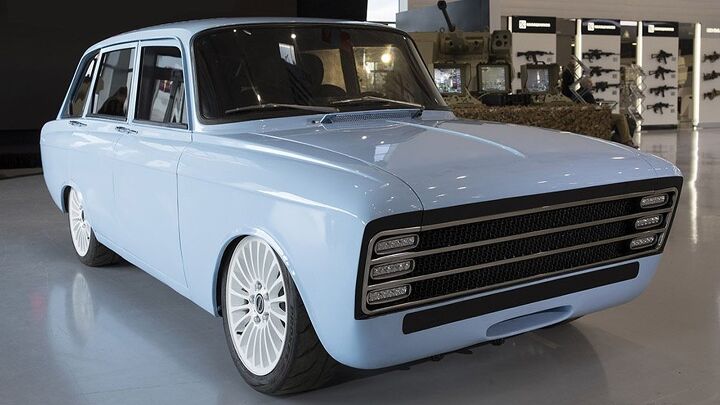


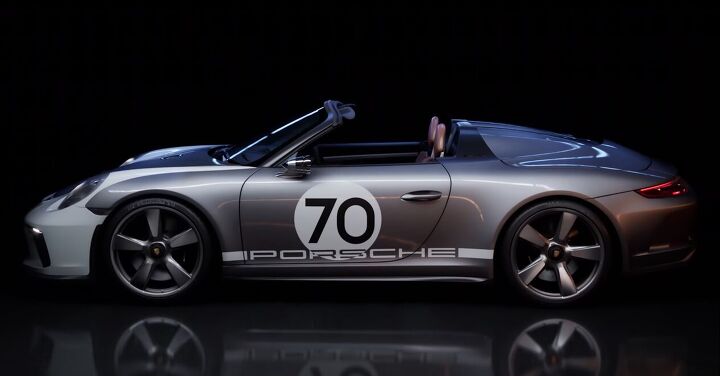

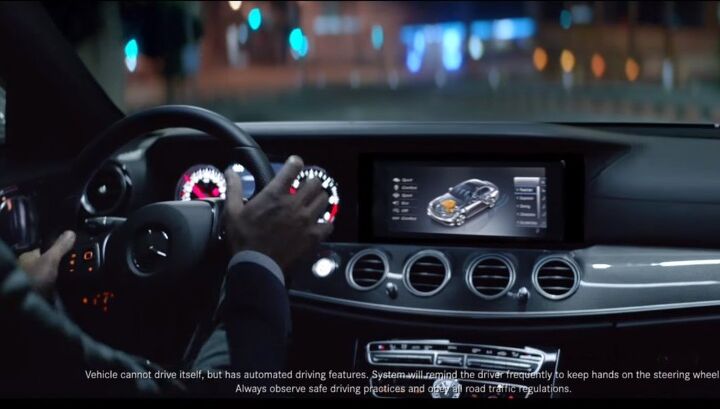
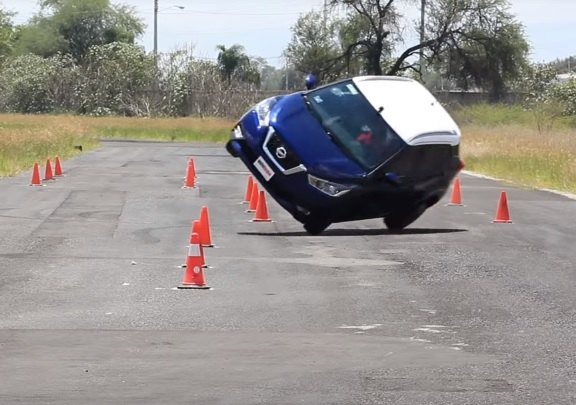

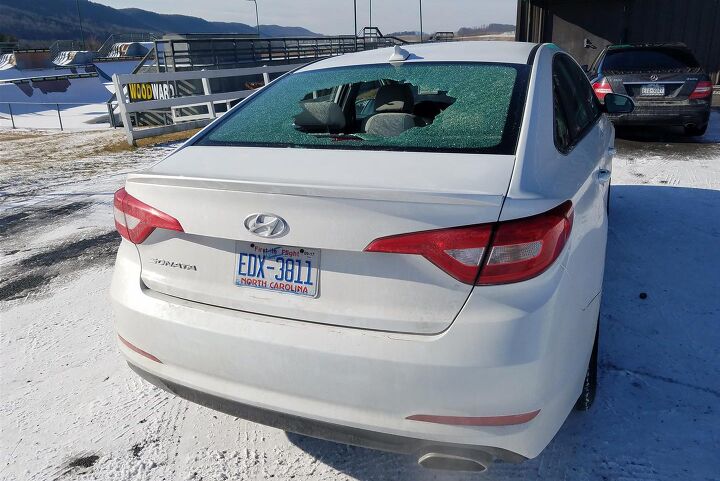



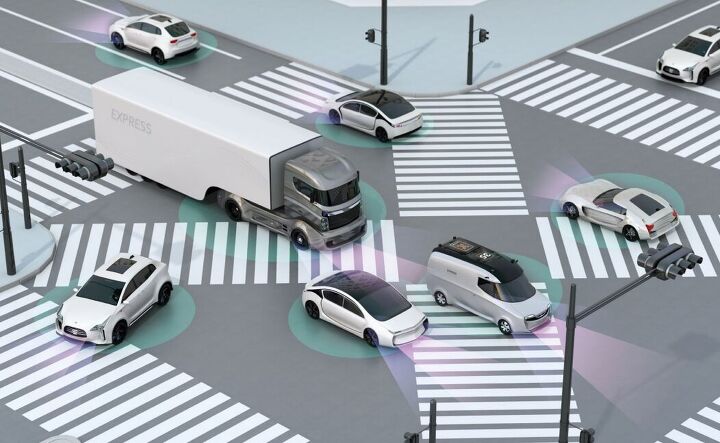







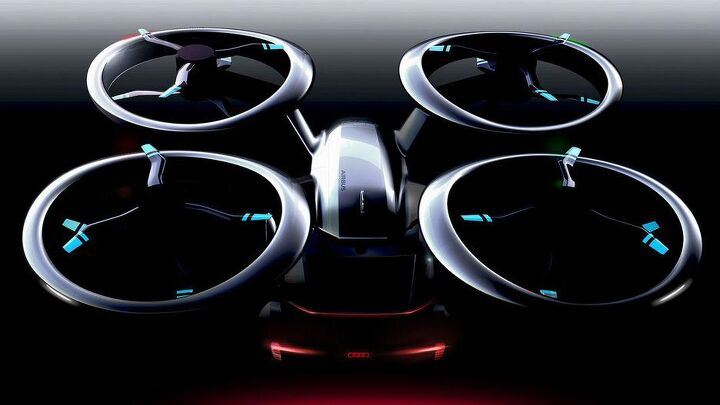
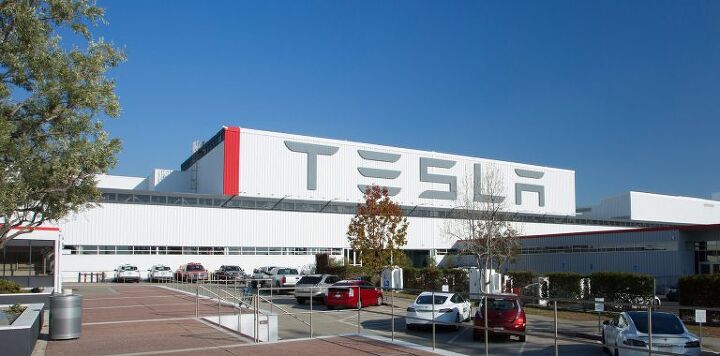


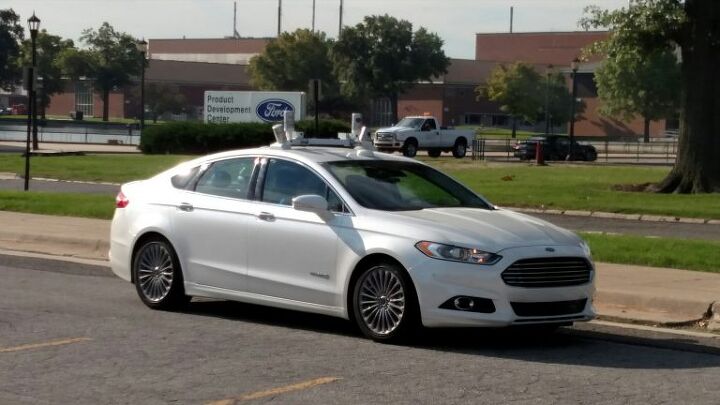



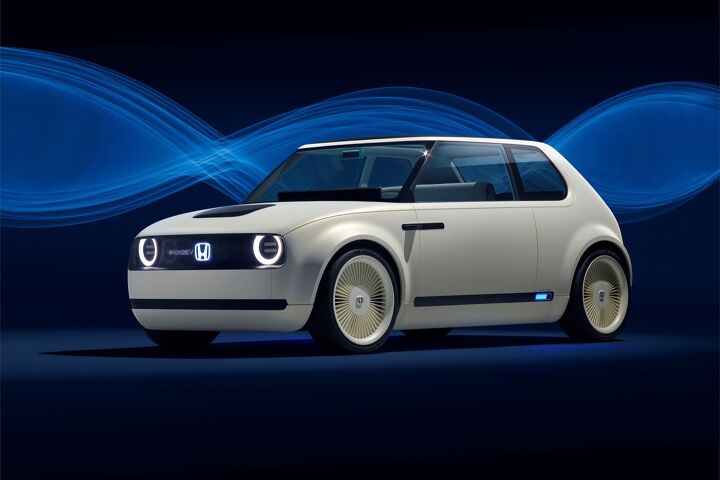





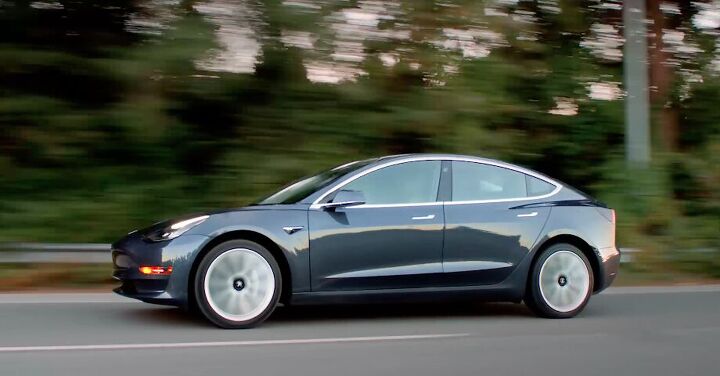







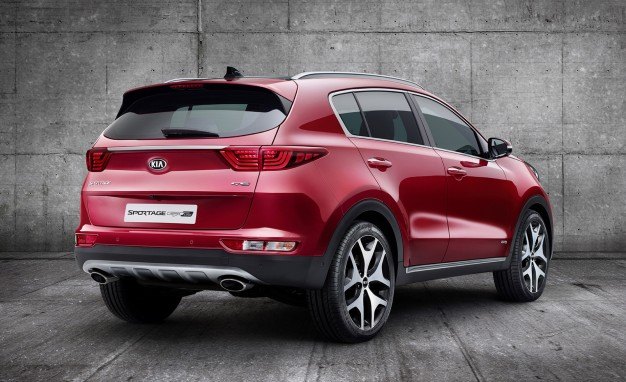




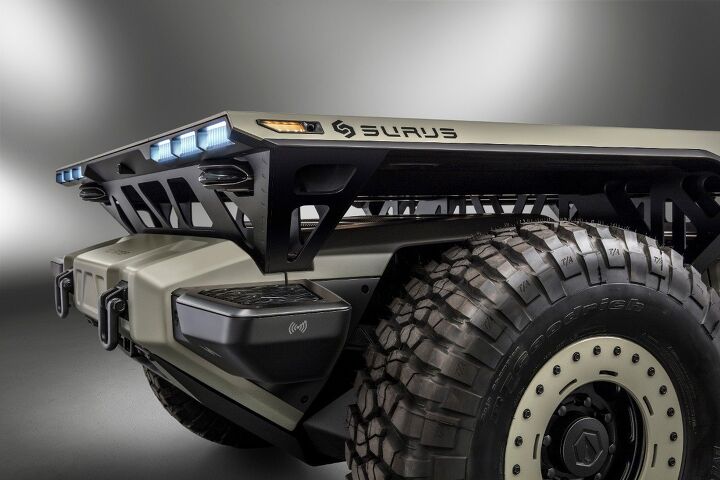








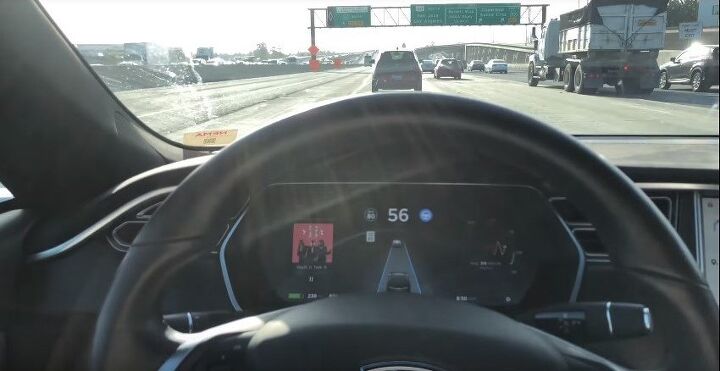













Recent Comments